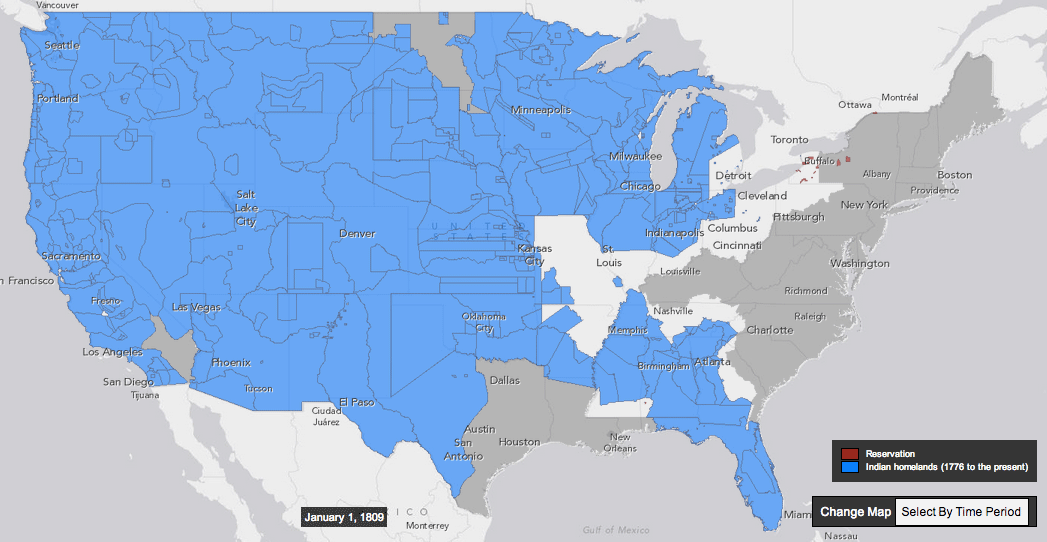

Time Lapse Map Depicting the Loss of 1.5 Billion Acres of Land stolen from Native People from 1776-1887

Pena Bonita (Apache)
Skywalker Series, 2016
Who built the New York City skyline? Pena Bonita pays homage to Skywalkers, the remarkably skilled Native American iron and steel workers who built much of New York City including the Empire State Building. These photographs show an ironworker and a friend of the artist wearing the customary welding helmet. The drawings on the surface of the photos are Apache symbols and references to the trade.
Prior to contemporary safety regulations, the life-threatening work of building the skyscrapers was rejected by many non-Native people. Some of the early ironworkers were Kanienkehaka or Mohawk people involved with steelwork as part of a trade agreement with contractors that were interested in developing their land. At least one contract for obtaining land rights in the 1880s stipulated that the company hire men from the reservation, though they were paid lower than average wages. More recently, Skywalkers participated in the perilous rescue missions at the Twin Towers on 9/11, and they contributed to the construction of the Freedom Tower.
"As a New Yorker, I walk everywhere. Looking down, I see a hard shell of concrete creating a barrier between me and the earth beneath. After living in Los Angeles and New York for nearly a decade I am compelled by the idea that the ridged persona of some people might relate to never being able to touch their feet on the soil of the original land. This idea lingers, when I am back in the Midwest, on top of a hill with a newfound strength and awareness of the opportunity I have to be able to interact with the land.
I contemplate the life and death that occurs on even the smallest plot of land over time: the emotion and evidence of the past that lingers or is covered up, and the impact of change made by nature, man, or animals. With acrylic paint, those emotions and layers of events are what I want to express in this painting, being one of the first in a new series of “landscapes.”
- Renelle White Buffalo (Lakota)